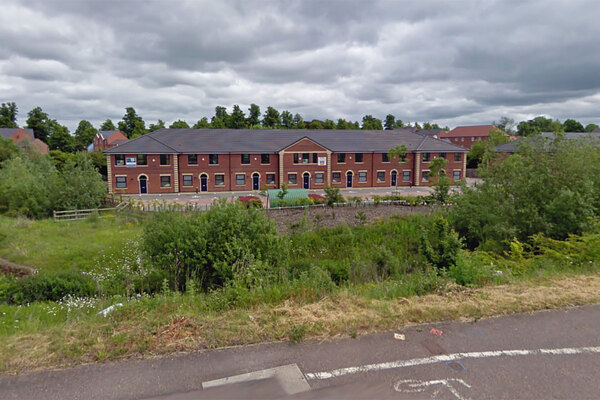Grenfell Tower Inquiry phase two preview: the warnings of the local community
Ahead of the start of phase two of the Grenfell Tower Inquiry on 27 January, Inside Housing is previewing some of the issues that will be under consideration. In the fifth of these, Peter Apps looks at the warnings made by the local community before the fire
Sir Martin Moore-Bick said in his first phase report that the warnings of the local community before the fire were a matter of “particular concern” for the second phase of the inquiry.
The warnings came in many forms. Most notorious was the prophetic Grenfell Action Group blog post from November 2016 that said: “It is a truly terrifying thought but the Grenfell Action Group firmly believe that only a catastrophic event will expose the ineptitude and incompetence of our landlord, the KCTMO.”
The post was the culmination of long-running complaints about the two-year refurbishment process and frustration that these complaints had not been dealt with.
As well as installing the cladding, the refurbishment fitted new windows and ‘heating interface units’ (HIUs) for the communal boiler in individual flats or the corridor outside them, all while residents lived in the building.
Eddie Daffarn, the leader of the newly formed residents association, summed up residents’ worries in a speech to the council’s housing scrutiny committee in January 2016. He described concerns about the positioning of the HIUs in hallways, a lack of response to complaints and general poor workmanship, as well as a range of other issues.
“Our day-to-day concerns have been belittled and sidelined, and we have had to endure living conditions that, at times, have been intolerable,” he said.
Mr Daffarn called for an independent review. But a committee of board members from the tenant management organisation (TMO) carried out the investigation itself.
The eventual report, obtained by Inside Housing, insisted complaints had been dealt with “adequately” – claiming falsely that just four residents had submitted them.
The report even praised both the contractor, Rydon, and the TMO itself for what it called “high quality management of the project”.
Left with nowhere to turn, the frustrated residents vented their anger with the prediction on their blog. While their complaints did not focus on the cladding – they had no reason to believe it was dangerous – they did raise issues that were pertinent to the fire, namely the windows and the failure of various fire doors to self-close.
The fact that these complaints were ignored led to considerable criticism from central government, culminating in a promise to overhaul the sector through the Social Housing Green Paper.
But if the inquiry starts digging into the issue, it will discover that one reason residents had nowhere to turn was the government’s decision in 2010 to axe the Tenant Services Authority, which had just been set up to regulate the social housing sector, with a specific remit to police complaints from residents’ associations.
The regulator that replaced it – the Homes and Communities Agency – had a severely restricted remit with regard to investigating and acting on complaints from tenants.
The only realistic place where Grenfell’s residents could escalate complaints was therefore the Housing Ombudsman. However, this was limited in practice and only able to act on individual cases, not systemic issues.
If Sir Martin pushes at this issue, an eventual recommendation for tougher regulation of consumer issues in the social housing sector is not out of the question.
Grenfell Tower Inquiry phase two previews
Picture: Getty
Inside Housing published a series of preview articles ahead of the start of Phase Two of the Grenfell Tower Inquiry on Monday 27 January. You can read them here:
What was known in central government about cladding?
What did officials know about the dangers of fire from combustible cladding, and did they act on the warnings?
Click here to read the full story
The testing and certification of materials
What tests and certificates existed for the materials used in the cladding system on Grenfell Tower, and was the system that provided them fit for purpose?
Click here to read the full story
The decision to install the cladding
Who decided to install polyethylene-cored ACM cladding on Grenfell Tower and why?
Click here to read the full story
The fire doors and windows
What went wrong with the fire doors and window installed at the tower?
Click here to read the full story
The warnings of the local community
What did residents say before the fire and why were they ignored?
Click here to read the full story
Over the course of the inquiry, Inside Housing will publish regular news updates on its progress and a weekly round-up of the key evidence and its significance for the social housing sector every Friday afternoon.
Grenfell Tower Inquiry phase two: modules
Inquiry chair Sir Martin Moore-Bick (picture: Getty)
The second phase of the Grenfell Tower Inquiry will be split into eight separate modules. Hearings will begin on Monday 27 January with the first module called ‘The primary refurbishment (overview and cladding)’.
This will include an examination of the decision to carry out the refurbishment and its budget, as well as the procurement of Rydon to act as the ‘design-and-build’ contractor for the job.
The selection of the materials in the cladding system, their compliance with the regulations and the process of building control will also come under the spotlight.
The inquiry will then move on to the testing, certification and marketing of the cladding products used.
Other modules will include active and passive fire prevention features of the tower – such as fire doors, lifts and the smoke control system, the role of central government and further evidence about the preparedness of the fire service.













